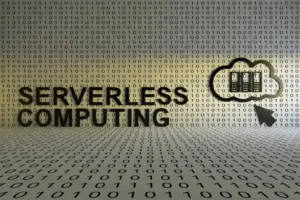When to Use NoSQL vs SQL: The fundamental distinctions

Today there are many databases, so specialists sometimes need help understanding which variant to select. To immediately exclude solutions that do not suit you, you need to know exactly when to use NoSQL vs SQL. In this article, we will compare these two categories of databases according to various criteria and tell you which option is more suitable in each situation.
The definition of SQL
Structured Query Language (SQL) is a systematized computer language that powers relational datasets and allows various manipulations with the information they store.
Such a system, created in the 1970s, is employed by database managers, programmers who generate algorithms for integrating insights, and analysts who want to customize storage to solve research problems.
The basis of any SQL system is a table that contains a certain number of rows and columns. One record in a table can be linked to another, or many in a table, or an entire group of records in a table can be linked to any number of cells in another table.
SQL is most often used when performing such jobs:
- Changing the dataset table and database indexes
- Increase or decrease the number of rows of data.
- Extraction of information from control systems by regulatory databases – such data is used to ensure operations processing, the work of analytical techniques, and other platforms integrated with relational datasets.
Such systems scale vertically, which means computer engineers may raise the marginal load by appending storage elements, including RAM. As you comprehend, SQL structures are limited by the power available on servers and cloud platforms.

We are confident that we have what it takes to help you get your platform from the idea throughout design and development phases, all the way to successful deployment in a production environment!
Some words about NoSQL
Let’s give a NoSQL definition. It is a data management approach that is not tabular; it provides for the processing and storage of data differently than in the case of the implementation of relational tables. If SQL solutions are used to deal with structured information, NoSQL systems successfully collaborate with systematized, semi-systematized, and non-systematized insights. Given the chosen data model, such structures are divided into separate categories; the most famous types of NoSQL database include documents, graphs, columns, etc.
NoSQL is often used for large repositories with significant information storage needs. They are helpful when discussing a corporation, e.g., Facebook, Twitter, or Google, because they must collect terabytes of consumer data daily.
Computer engineers cite the intuitive interface, horizontal scalability, and the ability to select access control mechanisms as the main features of NoSQL. Quick transactions and flexibility are other advantages of NoSQL over SQL due to the distinction in data organization as opposed to the default system presented in relational datasets.

The fundamental distinction between SQL and NoSQL
These systems have much in common if you think about when to use NoSQL vs SQL. In addition to successfully storing information and queries, such systems allow you to perform various data manipulations, e.g., add new facts, extract information, or remove obsolete insights. But if you dig deeper, you can see great differences that influence systems’ efficiency and ease of deployment. Let’s analyze the critical distinctions between the specified datasets.
| SQL | NoSQL |
| Datasets are usually relational. | Such a solution is represented by non-relational or distributed structures. |
| Such systems have been implemented for many decades | The solution came up recently. |
| Datasets are formed as tables, which include a certain number of columns and rows. When compiling them, strict standards are taken into account. It is an optimal solution for platforms collaborating with many operations. | Such structures rely on documents, graphs, pillars, and key-value algorithms. In generating them, you do not need to follow clear directives. |
| The systematization of data occurs following a predetermined transparent scheme. | They offer dynamic algorithms to deal with ad hoc insights. Specialists can store information in any form without utilizing clear structures. |
| High cost of scaling. | Scaling is cheaper. |
| Structures got vertical scaling; it is necessary to grow the capacity of computers, e.g., adjust the CPU and RAM to guarantee their deployment. | Such systems scale horizontally. You can append complementary servers to their architecture to raise capacity. |
| All datasets have regular creator and community support available. | System owners may count on limited community assistance. |
| The insights in the storage come from one or several channels. | Information comes from many channels. |
| SQL solutions use the computer language SQL. Some systems support only the pure language, while others interact with its extended version. | NoSQL is not tied to a specific computer language. It all depends on the dataset category used and the procedure being performed. |
| If you plan to append additional data to the storage, you should make some corrections, e.g., backfilling insights or algorithm adjustments. | You can quickly enter any new information; it does not require additional preparation. |
SQL and NoSQL are different techniques for keeping and processing information. If SQL is considered the standard choice for computer engineers, the popularity of NoSQL structures has risen in recent years. If you need to perform database integration but do not have experience in this matter, we recommend you seek help from specialists.
What to select: SQL or NoSQL
Now that you comprehend each environment, it’s vital to decide when to use NoSQL vs SQL, given the planned scope of activity and the structure and volume of the dataset. Let’s analyze which system is more suitable in different situations. Experts advise opting for SQL storage if:
- You have well-systematized data and don’t plan to change the archive radically.
- You deal with systems that perform many transactions, e.g., with financial platforms.
- Are you concerned about data protection?
- You can do without horizontal scaling, which is present in the functionality of NoSQL.
There are several situations where NoSQL is a more promising solution. Work with such storage if:
- Your activity involves processing much unorganized or partially organized information that a relational schema cannot handle.
- You try to find a model that can be simply adapted to your needs, or you need additional options to determine the optimal information system.
- You are interested in the potential for horizontal scaling without data.
- You want to decrease the costs associated with building a structured practice.
- Your platforms do not require consistent data.
It is essential to understand these are only general tips; each situation must be analyzed individually. Also, you don’t have to be restricted to one system. Many modern enterprises successfully combine both techniques to meet different needs. Don’t forget technologies don’t stay in one place, and new features appear in each system over time.
Final words
If you comprehend when to use NoSQL vs SQL, you must make the final choice and move the information into an optimal structure. Data integration is a sophisticated operation during which serious troubles can arise. Any inaccuracy can result in you losing critical insights or paying penalties for violating information control standards, including GDPR and CCPA.
Global Cloud Team (GCT) offers database and API integration services. Our specialists are ready to develop an optimal dataset architecture for each client from scratch or synchronize existing insights with other digital products. Professionals have extensive experience, the necessary instruments, and the assets to implement projects of any complexity.
Top Articles
LLMOps: A Complete Overview of the Best Practices
I am here to help you!
Explore the possibility to hire a dedicated R&D team that helps your company to scale product development.






